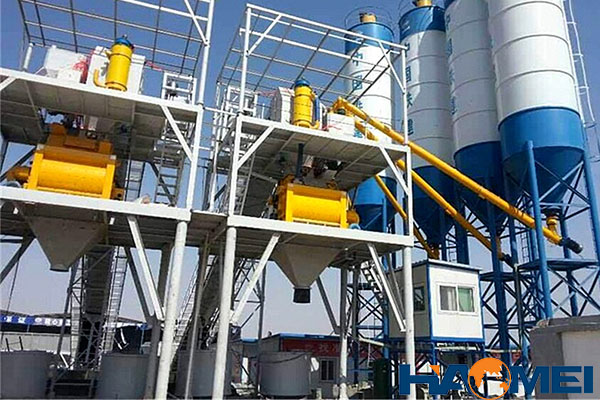1.Concrete batching plant inspection points before starting it
(1) Inspect all the galvanized steel wire ropes for damage and immobility. The galvanized steel wire ropes are fixed immovably, and the damage should be replaced if the damage is more serious.
(2) Check whether the centrifugal pump is filled with incoming water, whether the flushing valve is closed, and whether the pipeline is cleaned and unblocked.
(3) Check whether the concrete weighing bucket dumping door, mixer dumping door, etc. are turned off easily and reliably.
(4) Check whether the lubrication points and reducer have sufficient grease.
(5) Check the gap between the blade of the mixer and the wear-resistant lining to keep it stable from start to finish, which is very important to increase the life of the mixer.
(6) Check whether the self-protection equipment of the air compressor is reliable and whether the standard air pressure is stable at 0.7MPa.
(7) Check whether the electrical equipment can be trusted, check whether the limit switches are flexible and reliable, and check whether the limit switch of the silo is reliable.
Warning: All these must be carried out while the general power of the concrete mixing plant is cut off and there’s no possibility of powering the plant on suddenly!

2. Maintenance points after each shift
(1) Remove the dirt and finished products from the concrete mixer.
(2) Drain the vapor and water stored in the air cylinder of the air compressor.
(3) Fill each grease with grease.
(4) Disconnect the main switch power supply and the microcomputer switch power supply after shutdown.
3. Points for weekly inspection and maintenance
(1) Check the solidification status of the residual concrete in the mixing tank. If there is solidification, turn off the power, disconnect the power switch, take care of it by full-time personnel, and perform manual service removal. Check the gap between the mixing leaves and the wear-resistant lining, if it is not suitable for adjustment.
(2) Check whether the air supply system software has a steam leakage condition and whether the posture of each cylinder is reliable.
(3) Check whether the electrical components of the circuit system are damaged, and if there is damage, carry out maintenance and replacement. Check whether each wiring is loose.
(4) Check the quality of the reducer grease and the liquid level aspect ratio. If it is not specified, it should be replaced or added.
4. Points for routine inspection and maintenance
(1) Ensure the cleaning of the server and the surrounding environment. For example: check the gaps between the mixing leaves, wear-resistant linings and scrapers; check whether the mixing server has a shaft; check whether the pour doors and loading bins are flexible and closed;
(2) Check and clear the running material in the silo at all times to ensure that the controller returns to zero normally.
(3) Check whether the grease at each humidification point is sufficient, and the pneumatic triple parts in the air supply system software should maintain a good remaining oil.
(4) Check whether the electric motors and household appliances have over-temperature conditions and abnormal noises. Check whether the instrument panel indicates that everything is normal and whether the signal system is normal.
(5) Cylinders, vibration motors, and relays are often inspected and adjusted to make opening and closing in compliance with regulations.
(6) often check the system software, if there are ash leakage, steam leakage, oil leakage and power outages, etc., they should be properly handled.
(7) The mixing server and the access silo should be cleaned every four hours to prevent the remaining concrete from solidifying and hinder all normal operations.
(8) Every time, the internal water storage of the air compressor, air storage tank and filter device should be drained, and common faults in operation should be removed.
(9) Disc valves, mixing servers, relays, air filters, vibration motors, and pneumatic triple parts are maintained in accordance with relevant instructions.
Not only in winter, but at all times, the maintenance of concrete batching plants should be as comprehensive as possible to prevent mechanical failure problems for the concrete mixing station.